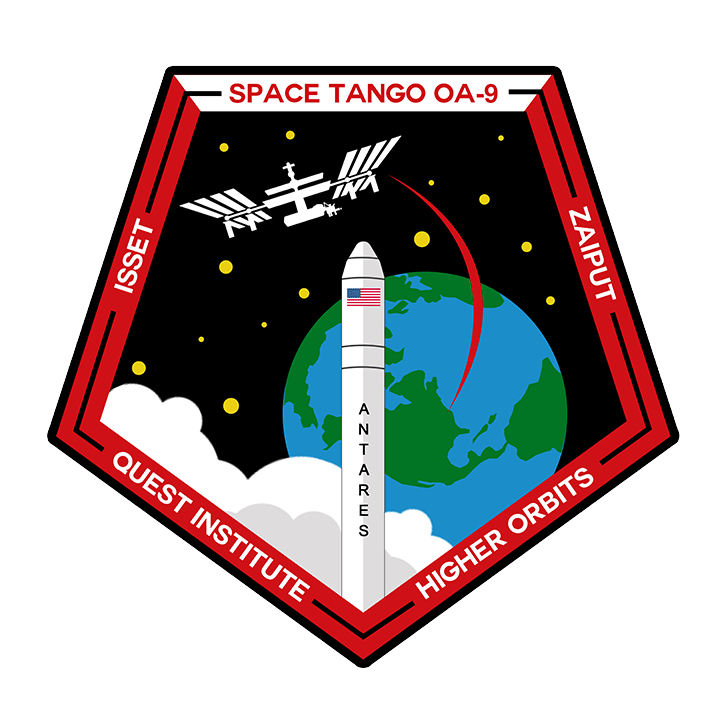
We use cookies to ensure that we give you the best experience on our website. If you continue to use this site we will assume that you are happy with it.
Ok ✕

Imagery from Data Downlinks Provides Insight on Fluids in Microgravity
LEXINGTON, Ky. (June 13, 2018) – Space Tango today shared data downlinks and images from experiments being conducted on the International Space Station for a variety of commercial and educational payloads. NASA astronauts Drew Feustel and Scott Tingle successfully installed Space Tango research payloads onboard the International Space Station (ISS) on May 25th at approximately 5:00 AM EST after the successful docking of Orbital ATK’s Cygnus Commercial Resupply Services-9 (OA-9) cargo spacecraft.
One of the payloads launched on OA-9 seeks to test a new liquid separation system developed by Zaiput Flow Technologies. Liquid separation is a critical step in chemical synthesis, and Zaiput’s new system could lead to significant improvements in drug development and production. While common methods to separate liquids rely on liquid sedimentation, Zaiput’s system relies on surface forces to accomplish liquid-liquid extraction.
“We designed and engineered flight hardware that allows Zaiput to evaluate separation based on surface tension, a method thought to be independent of gravity but never tested before,” explained TangoLab program manager Gentry Barnett. “The CubeLab system maintains separation of liquids and accommodates the unpredictable ways liquid moves when gravity is removed as a variable so that the physics of the process can be better understood.”
A video of the data from research in microgravity is provided below:
Space Tango works alongside principal investigators and student teams, conducting a variety of research in microgravity, from design to implementation to develop CubeLabs that are internally unique to the research being conducted in microgravity.
During the remainder of the approximate month-long stay aboard the ISS, Space Tango will continue to monitor the progression of research payloads and collect data from their autonomous TangoLab facilities.
Space Tango payloads recently delivered and installed for the OA-9 mission, along with images from data downlinks include:
Payloads:
Zaiput Flow Technologies
PI: Andrea Adamo
The Continuous Liquid-Liquid Separation in Microgravity investigation will use a unique liquid separation system of relying on surface forces to accomplish liquid-liquid extraction. While common separation methods rely on liquid sedimentation, the Zaiput Liquid-Liquid Separation system has the unique characteristic of relying on surface forces to accomplish liquid-liquid extraction. Besides having significant scientific value, the information gained from this work will be critical to define in detail the physics of the process and it would empower a scale-up of the systems to flow rates suitable for chemical production.
Higher Orbits
PI: Michelle Lucas
The Biological Nitrogen Fixation in Microgravity via Rhizobium-Legume Symbiosis (Biological Nitrogen Fixation) experiment led by the Higher Orbits Go For Launch!program examines how the low gravity conditions of space affect the nitrogen fixation process during growth of a well-known legume –microclover. Automated laboratory modules maintain germination and growth conditions while atmospheric nitrogen is measured throughout the mission. Gaining a better understanding of the BNF process in a microgravity environment could be valuable in advancing technology which aims to progress the field of commercial BNF soil nutrition.
Craft Academy
PI: Michael Fultz
The Contractile Properties of Smooth Muscle in Microgravity project is a research/educational venture led by the Craft Academy in collaboration with its partner – Morehead St. University (Morehead, KY). This project is the second of a two-part experiment with the purpose of evaluating the involuntary cell contractions of aortic smooth muscle cells in a microgravity environment. This research could produce new understanding of the contractile mechanism that operates within these cells to control blood pressure, and, in turn, could lead to novel hypertension treatment options.
This payload will also be the first payload to fly with power inside the MERLIN refrigerator facility. Successful demonstration of this capability could significantly improve how cell culture research is maintained until reaching the ISS.
The International Space School Educational Trust
PI: Julie Keeble
The International Space School Educational Trust (ISSET) Multi-Experimental Module is a set of educational experiments to be performed and evaluated in a microgravity environment. Students are investigating the effects of the space environment on both life science and physical science experiments. The ISSET Multi-Experimental Module will contain three independent investigations:
Quest Institute
PI’s: Howell Ivy and Dan Saldana
Quest Institute Multi-Experiment, Educational Investigation #2 is a multi-experimental payload that encompasses 14 independent life science and physical science mission objectives:
Space Tango
PI: Gentry Barnett
The Space Tango Microgravity Thermal Investigation will examine the thermal effects of heating and cooling methods in microgravity in the absence of convection. The payload will include thermal imaging and a grid of temperature sensors to map how active temperature disturbances are transferred within a sealed container.